Independent Pharmacies Opening, Closing More Than Chain Storefronts
Amid increased market concerns, researchers explored retail and independent community pharmacy turnover rates spanning from 2010 to 2023.
With an annual turnover rate of 6.2% in the community pharmacy market, independent pharmacies were found to open and close more frequently than chain pharmacies, according to a study published in JAMA Health Forum.1
“While business-level churn can represent a healthy marketplace with entrepreneurs starting new businesses or existing businesses expanding locations, churn can also represent a declining market or area where businesses are struggling to maintain a profitable operation or attract customers,” wrote authors of the study. “Given the prior work on medication adherence after a pharmacy closure, high churn rates for pharmacies may be of concern to health systems and policymakers.”
Business churn is the idea of a certain industry’s market dynamics that lead to either business openings or closures. While the term churn encapsulates both business closures and openings, high churn rates can indicate either a significantly growing or declining business market.
And according to many experts and various reports in recent years, there are great concerns of significantly negative churn rates within the retail pharmacy industry.
READ MORE:
Prior to this study, a significant number of reports on pharmacy closures has been circulating, with nearly 30% of all US pharmacies closing between 2010 and 2020.2 From 2018 to 2021, pharmacy closures significantly outweighed openings, with independent pharmacies and locations in Black and Latinx communities at the greatest risk of future closures.3 Even more recently, a total of 2275 pharmacies closed in the first 9 months of 2024 and an additional 300 closed by March of this year.4-5
Amid increasingly growing market pressures toward retail and independent pharmacies, researchers of the current study aimed to provide a more detailed update to the current state of community pharmacies in the US and how previous trends may inform future policies and initiatives.
“This study sought to evaluate pharmacy closures and openings from 2010 to 2023, using the concept of business churn rate,” they continued.1 “We aimed to describe patterns for both openings and closures, disaggregated by type of pharmacy ownership (independent and franchise or chain).”
Researchers conducted a cross-sectional analysis of community pharmacy closures and openings between 2010 and 2023. Using National Council for Prescription Drug Programs (NCPDP) data, they determined the pharmacy churn rate during the study period was the primary outcome. In the context of this study, churn rate was defined as the total number of pharmacy openings and closures throughout the 14-year period divided by the total number of pharmacies at the start of the period.
Exploring a wealth of NCPDP data, researchers uncovered a total of 61,054 retail pharmacies (39,158 chain; 21,896 independent) in 2010 and a total of 60,354 (36,622 chain; 23,732 independent) by the end of 2023. When detailing unique pharmacy locations only, they reported 17,493 (40.1%) pharmacy closures, 16,783 (38.5%) pharmacy openings, and 9349 (21.4%) pharmacies that opened and subsequently closed during the study period.1
The total number of pharmacy closures and openings, or the total churn, was 52,974. This represents a total churn rate of 86.8%, or 6.2% year over year. When comparing pharmacy types, independent pharmacies saw a 152.7% churn rate compared with a 49.9% churn rate among chain pharmacies.
According to study authors, one of the main reasons for independent pharmacy churn outweighing chains was due to the significant number of independent pharmacies that opened and closed during the study period, compared with chain pharmacies.
“Our findings that independent pharmacies open as frequently as they close adds an additional layer of complexity that merits increased attention. First, this phenomenon reflects the relatively lower barrier to market entry for an independent business and potential business strategies for independent pharmacy owners,” they wrote.1 “For example, given the known practices among large chain pharmacies to buy independent pharmacies, an independent pharmacy owner may aim to sell their pharmacy to a chain, and then those same pharmacy owners may open a new independent pharmacy.”
Researchers hypothesized that independent pharmacy churn rates may be higher than chain pharmacies because of the higher odds of an independent pharmacy opening and closing faster than chain pharmacies. In other words, with independent pharmacy owners experiencing minimal obstacles when opening a pharmacy, researchers believe these locations can just as easily close or be bought by a larger chain.
While the current study successfully presents a wealth of data for all pharmacies in the US during a lengthy time period, authors noted that omitting information on pharmacy benefit managers (PBMs) potentially limited results of the study. Because major PBMs have been known to drive up prescription drug prices and make pharmacy sustainability increasingly difficult,6 experts believe policymakers, researchers, and other necessary stakeholders should be constantly aware of how these trends impact US patients.
“This cross-sectional study found that the community pharmacy market in the US has an annual turnover rate of approximately 6.2%, with independent pharmacies opening and closing more frequently than chain pharmacies,” concluded the authors.1 “Researchers, health system leaders, and policymakers should be cognizant of the disruption in health care that patients may face after a pharmacy closure and evaluate all of the costs and benefits of pharmacy churn on pharmaceutical care delivery.”
READ MORE:
Pharmacy practice is always changing. Stay ahead of the curve: Sign up for our
References
1. Mattingly TJ, Sahu M, Anderson KE. Community pharmacy turnover and context of openings and closings by ownership type. JAMA Health Forum. 2025;6(8):e251988. doi:10.1001/jamahealthforum.2025.1988
2. Nearly 30% of US drugstores closed in one decade, study shows. US News & World Report. December 3, 2024. Accessed August 15, 2025. https://www.usnews.com/news/health-news/articles/2024-12-03/nearly-30-of-us-drugstores-closed-in-one-decade-study-shows
3. Guadamuz JS, Alexander GC, Kanter GP, et al. More US pharmacies closed than opened in 2018–21; independent pharmacies, those in Black, Latinx communities most at risk. Health Affairs. 2024;43(12):1703-1711. https://doi.org/10.1377/hlthaff.2024.00192
4. Jolley B. 2275 pharmacies have closed so far in 2024. Ramblings of a Pharmacist. September 2024. Accessed August 15, 2025. https://benjaminjolley.substack.com/p/2275-pharmacies-have-closed-so-far
5. Nowosielski B. Over 300 pharmacy closures reported in the last 3 months. Drug Topics. March 14, 2025. Accessed August 15, 2025. https://www.drugtopics.com/view/over-300-pharmacy-closures-reported-in-the-last-3-months
6. Nowosielski B. How PBMs impact independent pharmacies. Drug Topics. August 16, 2024. Accessed August 15, 2025. https://www.drugtopics.com/view/how-pbms-impact-independent-pharmacies
Newsletter
Pharmacy practice is always changing. Stay ahead of the curve with the Drug Topics newsletter and get the latest drug information, industry trends, and patient care tips.




































































































































